Discover the Serenity of the White Pagoda at Ciyun Temple: A Hidden Gem in Beijing
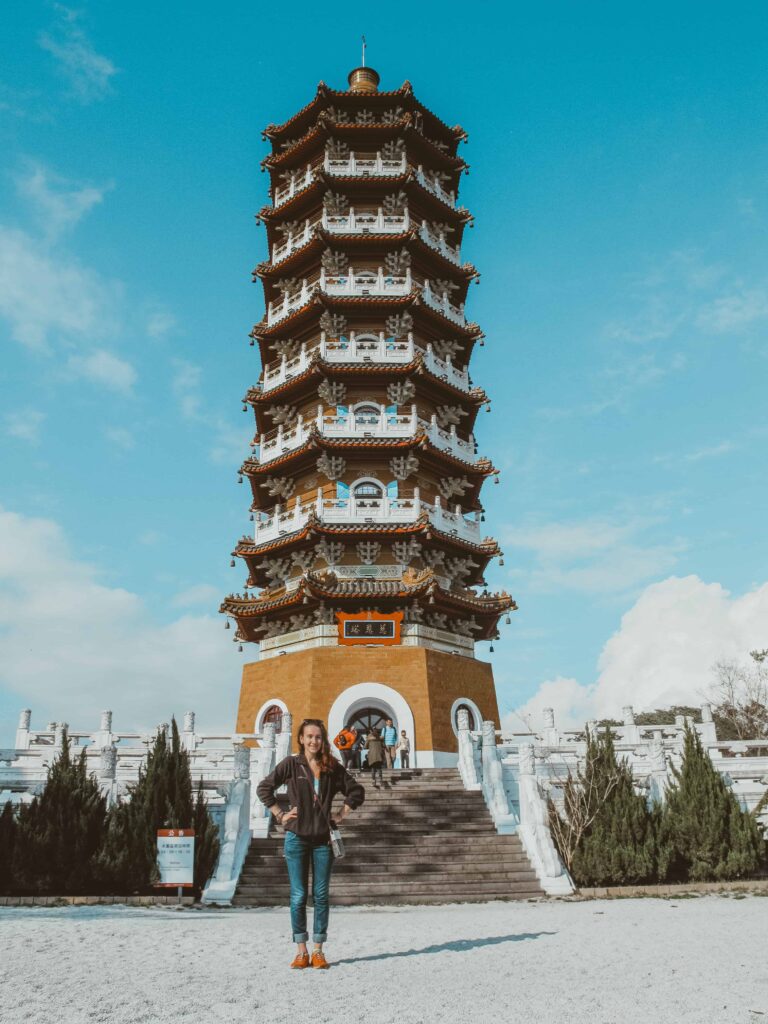
An Essential Guide to Visiting White Pagoda Of Ciyun Temple
In This Guide
- An Essential Guide to Visiting White Pagoda Of Ciyun Temple
- The Rich History and Legends of White Pagoda Of Ciyun Temple
- Main Highlights: What You Absolutely Can’t Miss
- Planning Your Visit: A Practical Guide
- Tickets: Prices, Booking, and Tips
- How to Get There: A Complete Transportation Guide
- Local Cuisine and Accommodation Nearby
- Frequently Asked Questions
- Final Thoughts on Your Trip
Nestled at the foot of Shizishan Mountain in Chongqing, Ciyun Temple, or慈云寺, offers an enchanting blend of spirituality, history, and breathtaking views. This sacred site, which hugs the banks of the mighty Yangtze River, is not just a temple; it is a testament to the rich tapestry of Chinese culture and Buddhism. Originally constructed during the Tang Dynasty and later renovated in the Qing Dynasty, Ciyun Temple stands as a remarkable example of architectural harmony, showcasing influences from both traditional Chinese and Western styles.
What sets Ciyun Temple apart is its unique history—being one of the few Buddhist temples in China where monks and nuns coexist, a feature that highlights the temple’s progressive spirit during its expansion in 1927. As you wander through its ancient halls, you will encounter a wealth of artifacts, including stunning jade Buddha statues and sacred scriptures, which collectively narrate the enduring legacy of Buddhism in this region.
The temple not only beckons history enthusiasts but also nature lovers, as the panoramic views from its summit reveal the sprawling cityscape of Chongqing against the backdrop of the Yangtze River. Whether you’re here to meditate among the tranquil pavilions, marvel at the intricate artistry of the Buddha statues, or simply soak in the atmosphere, a visit to Ciyun Temple is an essential journey into the heart of China’s spiritual heritage.
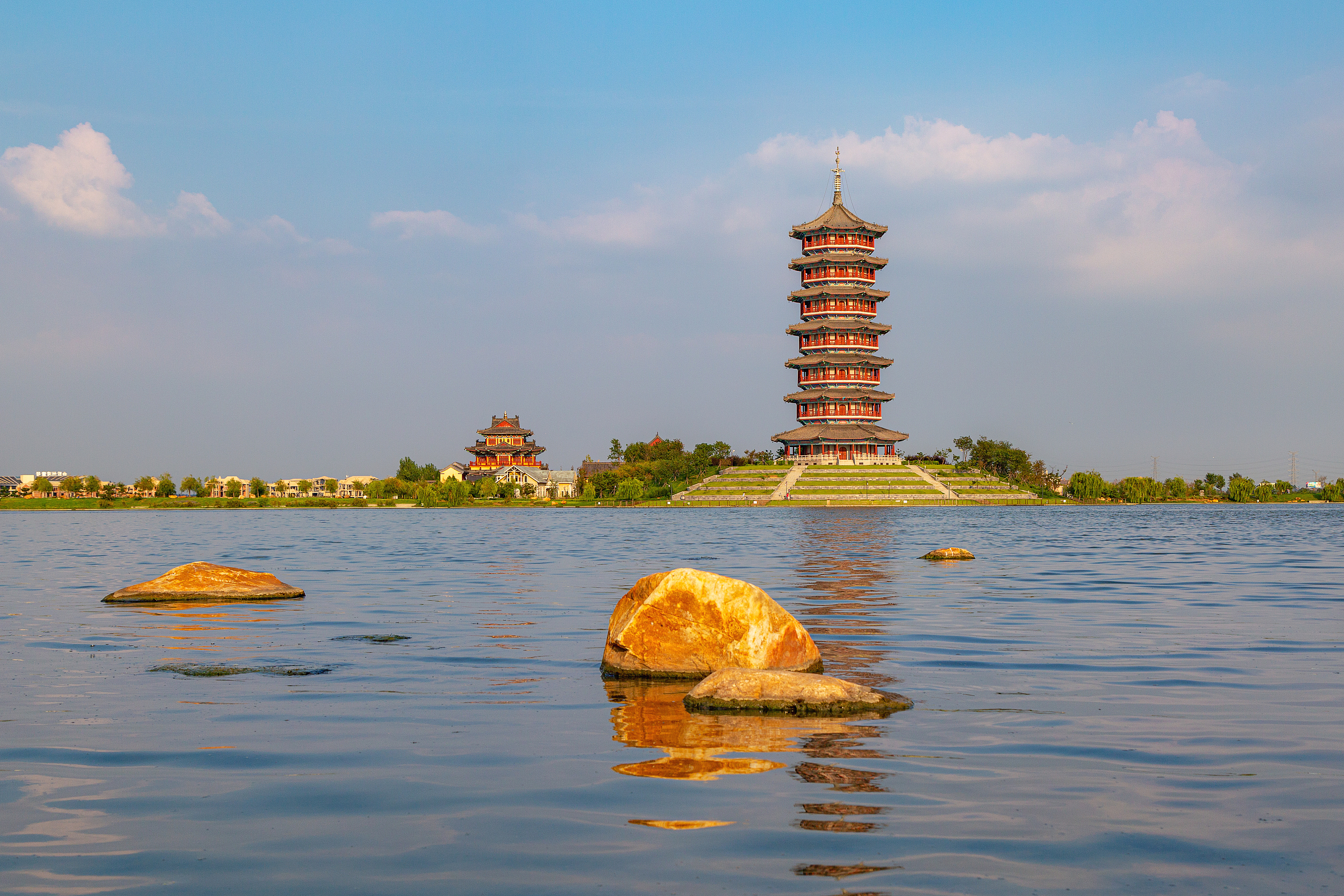
White Pagoda Of Ciyun Temple.
Key Highlights to Explore:
- Architectural Wonders: Discover the harmonious blend of styles in the temple’s various halls and pavilions.
- Buddhist Treasures: Marvel at the impressive collection of jade statues and ancient scriptures.
- Bodhi Tree Miracle: Learn about the storied past of the Bodhi tree, a symbol of resilience and renewal.
- Stunning Views: Climb to the highest point for breathtaking vistas of Chongqing and the Yangtze River.
Embark on this journey and let the serene beauty of Ciyun Temple captivate your spirit and elevate your understanding of Chinese culture.
The Rich History and Legends of White Pagoda Of Ciyun Temple
Nestled at the foot of Shizishan Mountain in Chongqing, the Ciyun Temple stands as a profound testament to the enduring legacy of Buddhism in China. This sacred site, originally established during the Tang Dynasty, has undergone numerous transformations and renovations, each reflecting the socio-political climate of its time.
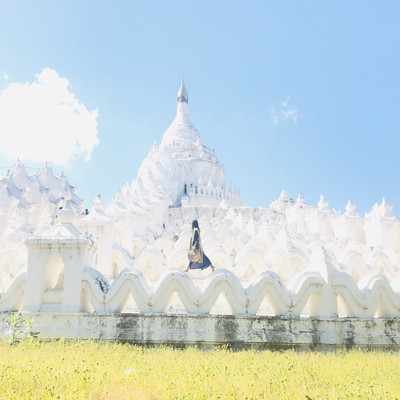
White Pagoda Of Ciyun Temple.
A Journey Through History
The origins of Ciyun Temple date back to the Tang Dynasty (618-907 AD), a golden era for Buddhism in China. Initially dedicated to Guanyin, the Goddess of Mercy, the temple served as a spiritual haven for practitioners and pilgrims alike. During the Qing Dynasty, particularly in the Qianlong period (1736-1795), the temple underwent significant renovations that infused it with unique architectural elements blending both traditional Chinese and Western styles.
In 1927, under the guidance of Master Yunyan, the temple saw another pivotal transformation. It was expanded and renamed Ciyun Temple, becoming notable for its groundbreaking inclusion of both monks and nuns. This cohabitation marked a rare departure from traditional practices, establishing Ciyun Temple as a progressive religious institution in a time of social upheaval.
Architectural Marvel
Ciyun Temple is characterized by its stunning eighteen pavilions and various halls, including the Universal Virtue Hall and the Thousand-Armed Guanyin Hall. The structures primarily date back to the Tang Dynasty, with the last major renovation occurring in 1936. Each building is a treasure trove of intricate carvings and religious iconography, contributing to its reputation as a cultural and spiritual hallmark.
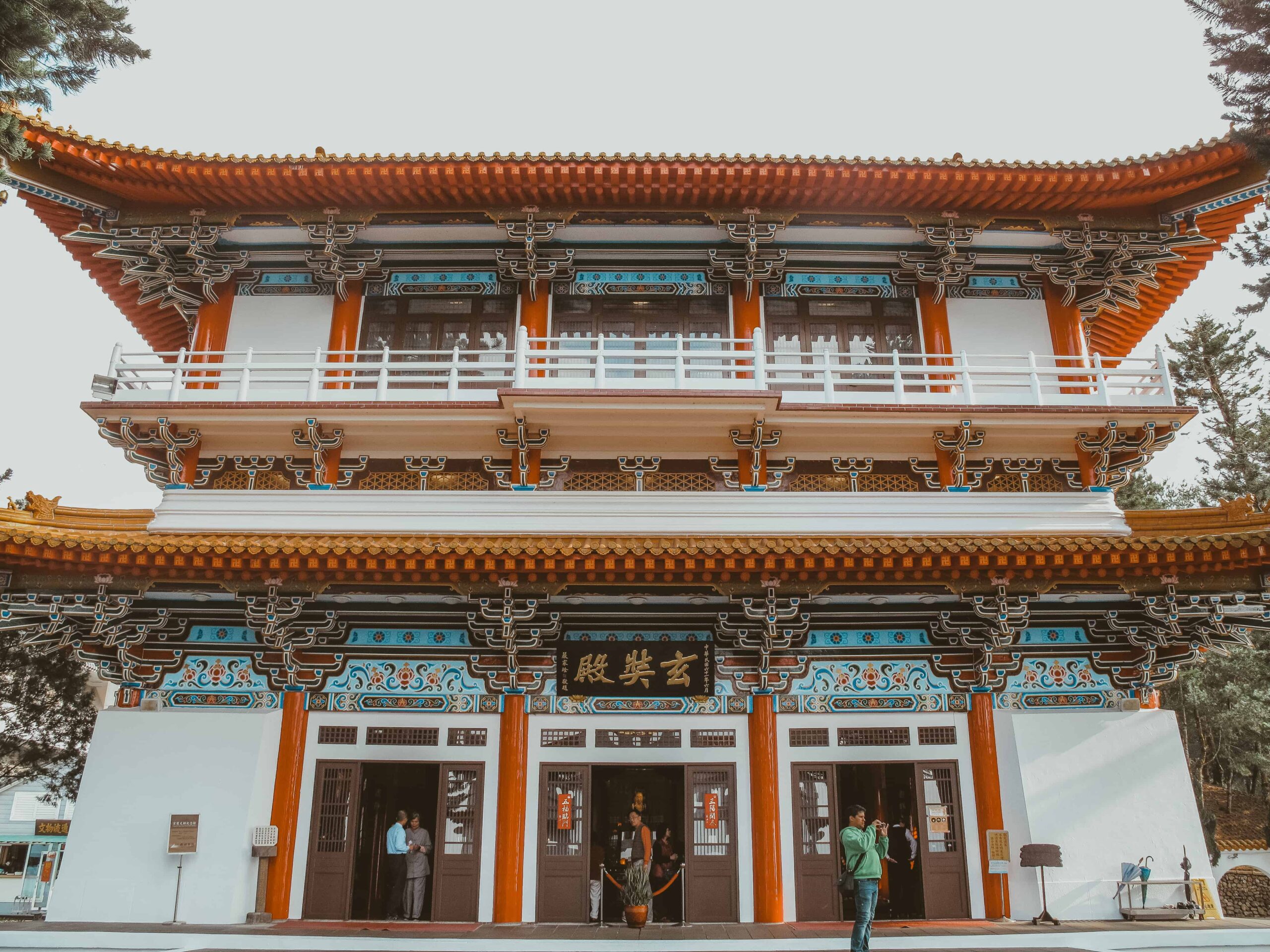
White Pagoda Of Ciyun Temple.
The Five Wonders of Ciyun Temple
Among the temple’s most revered artifacts are the “Five Wonders”:
-
Jade Buddha Statues: The temple houses three exquisite jade Buddha statues, the largest being a 1.87-meter tall Shakyamuni, weighing 1,500 kilograms. This statue is one of the largest jade Buddhas in China.
-
Vajra Canopies: Four intricately designed canopies adorned with the complete text of the Diamond Sutra, woven with gold thread, grace the space before the jade Buddha.
-
Ancient Scriptures: Ciyun Temple boasts 130 volumes of Buddhist scriptures, including rare editions from the Song Dynasty.
-
Bodhi Tree: A sacred Bodhi tree, transplanted from India, symbolizes enlightenment and the continuity of Buddhist practice. Its miraculous revival in 1982 after a period of dormancy during the Cultural Revolution has become a poignant emblem of resilience.
-
Artistic Treasures: The temple preserves a collection of embroidered Buddha hangings and early Japanese Buddhist paintings, showcasing the rich tapestry of Buddhist art.
Legends and Spiritual Significance
The temple is steeped in legends that enhance its spiritual allure. One of the most captivating tales is that of the Bodhi tree. According to lore, the tree’s revival was witnessed by monks and pilgrims who interpreted it as a divine sign, signaling a new era of religious tolerance in China.
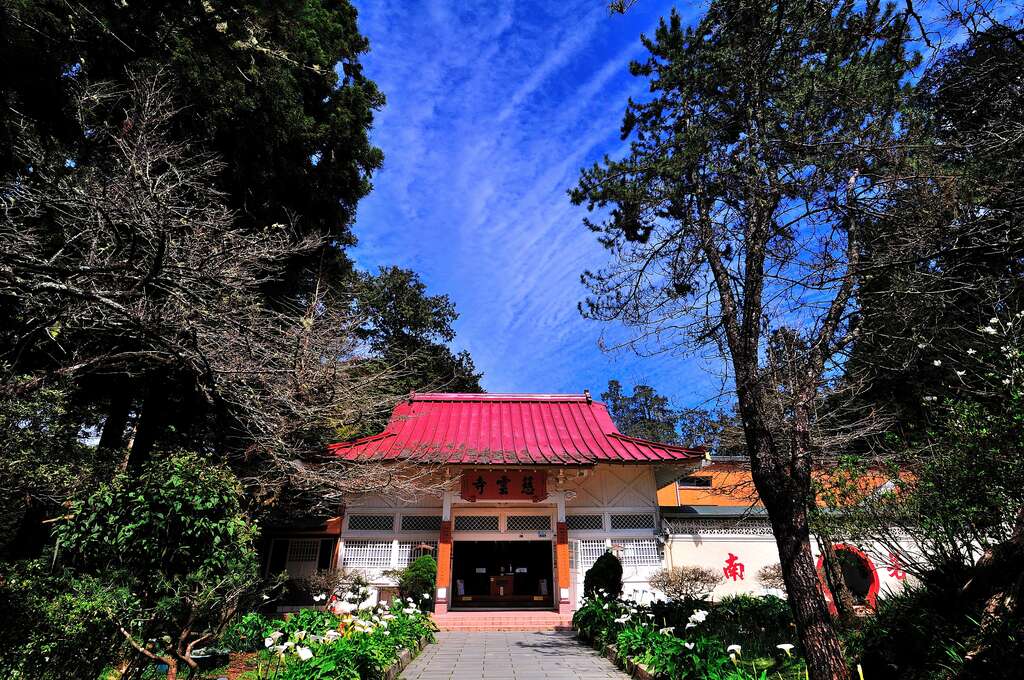
White Pagoda Of Ciyun Temple.
Adjacent to the Bodhi tree, the “Nine Dragons Bathing the Prince” sculpture narrates the story of the Buddha’s birth, where nine dragons showered the infant Prince Siddhartha with purifying waters, signifying his destined greatness.
The Panoramic Views
Visitors who ascend to the temple’s peak are rewarded with sweeping views of the Yangtze River and the surrounding landscape. This vantage point not only showcases the natural beauty of Chongqing but also serves as a reminder of the temple’s historical role as a sanctuary for reflection and meditation.
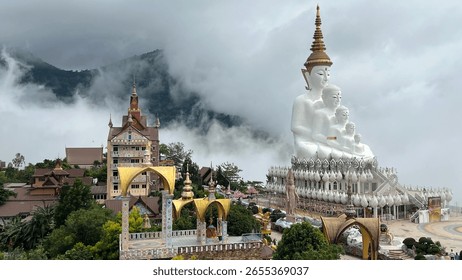
White Pagoda Of Ciyun Temple.
Conclusion
Ciyun Temple is more than just a religious site; it is a living museum of Chinese history and culture. From its architectural grandeur and rich collection of artifacts to the vibrant legends that permeate its halls, the temple invites travelers to delve deep into the heart of Buddhism and the cultural heritage of China. For international visitors seeking to understand the intricate layers of Chinese spirituality, a visit to the White Pagoda of Ciyun Temple is an enriching experience, steeped in history and profound significance.
Main Highlights: What You Absolutely Can’t Miss
Unveiling the Wonders of Ciyun Temple
Nestled against the backdrop of Shizishan Mountain and the serene banks of the Yangtze River, Ciyun Temple (慈云寺) is a treasure trove of history, spirituality, and breathtaking views. A visit to this remarkable site promises an enriching experience for those interested in Chinese culture and Buddhist traditions. Here are the main highlights that you absolutely cannot miss during your visit.
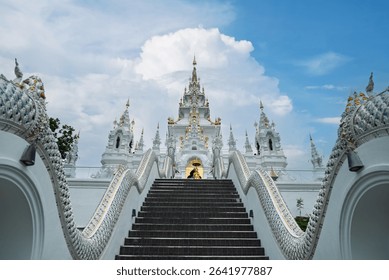
White Pagoda Of Ciyun Temple.
1. Architectural Marvels
Ciyun Temple stands out for its unique blend of Chinese and Western architectural styles. Originally built during the Tang Dynasty, the temple has undergone several renovations, particularly during the Qianlong period of the Qing Dynasty. The complex includes eighteen pavilions, the Guanyin Hall, the Manjushri Hall, and the Universal Virtue Hall, each showcasing intricate designs that reflect the artistry of their respective eras. As you wander through these hallowed halls, take a moment to appreciate the craftsmanship that characterizes this sacred space.
2. The Five Wonders of Ciyun Temple
Home to a remarkable collection of artifacts, Ciyun Temple is often celebrated for its “Five Wonders”:
- Jade Buddha Statues: Among the most esteemed is the Shakyamuni Jade Buddha, standing 1.87 meters tall and weighing 1500 kilograms, making it one of the largest jade Buddhas in China.
- Vajra Canopies: These beautifully designed canopies feature the complete text of the Diamond Sutra, skillfully crafted using gold threads in five colors.
- Ancient Scriptures: The temple houses a treasure trove of Buddhist scriptures, including the renowned Song Dynasty editions of the “Qisha Canon” and the “Pingqie Canon.”
- Embroidered Buddha Hangings and Buddha Robes: Discover a thousand intricately crafted robes and exquisite hangings that display the depth of Buddhist artistry.
- The Ancient Buddha Cave: This cave holds spiritual significance and offers a glimpse into the past.
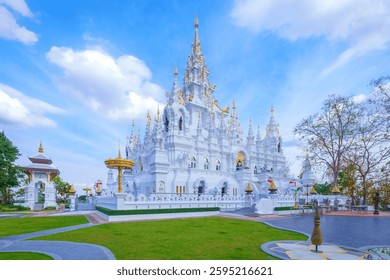
White Pagoda Of Ciyun Temple.
3. The Miraculous Bodhi Tree
A visit to Ciyun Temple would be incomplete without experiencing the Bodhi Tree, transplanted from India during the early Republic of China. This sacred tree, which withstood the trials of the Cultural Revolution, made a miraculous comeback in 1982, symbolizing hope and resilience. The serene atmosphere around the tree is complemented by the sculpted lotus flower pond featuring the “Nine Dragons Bathing the Prince,” a beautiful representation of the Buddha’s birth.
4. Panoramic Views from the Summit
For an unforgettable experience, make your way to the highest point of the temple complex. The summit offers stunning panoramic views of the Yangtze River and the surrounding landscape. Here, you can enjoy the tranquility of the vast gardens and the picturesque Haoyue Pavilion. The surrounding beauty, including the dragon-shaped Yangtze River Bridge and the bustling Chao Tian Men Port, adds to the ethereal experience.
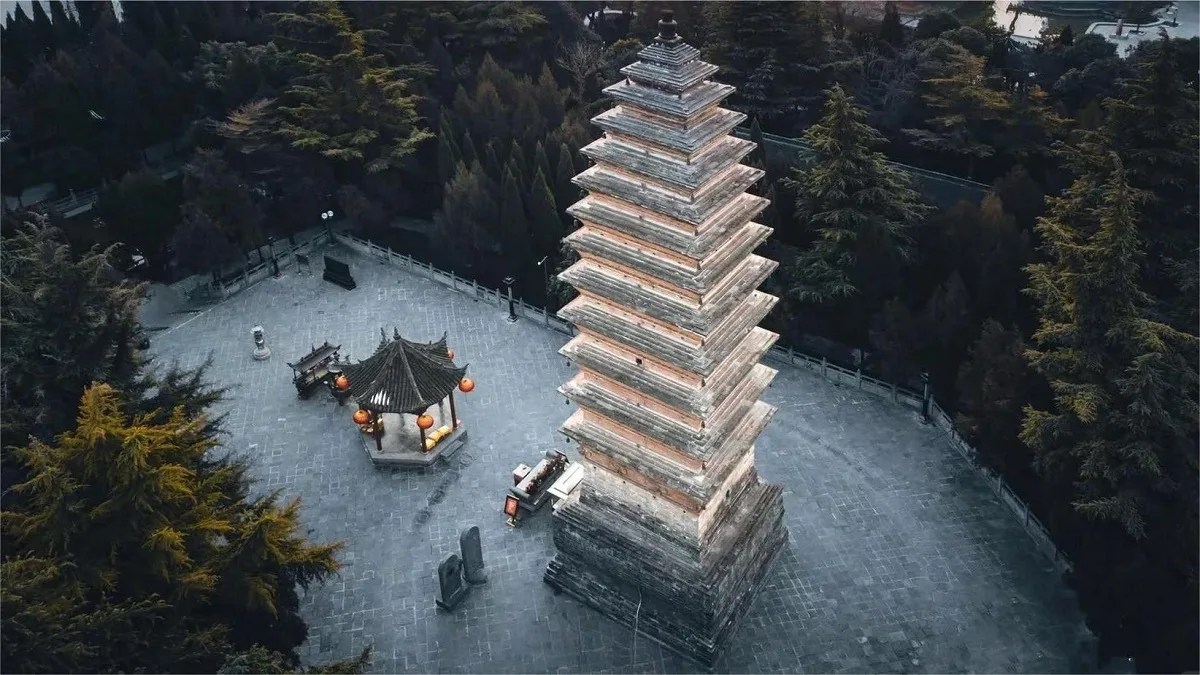
White Pagoda Of Ciyun Temple.
5. Savoring the Vegetarian Cuisine
Ciyun Temple is not just a visual feast; it’s also a culinary one. Known for its delicious vegetarian meals, the temple offers various options ranging from set menus to “pay as you wish” meals, typically served at 11:00 AM and 5:00 PM. These meals are not only affordable (ranging from 10 to 20 yuan) but also represent the temple’s commitment to sustainable and mindful eating practices.
6. The Ancient Bell Experience
Adjacent to the incense-burning platform, you’ll find an ancient bell that you can strike for a nominal fee. Each toll resonates with the passage of time and serves as a reminder of the temple’s long-standing history. The experience of ringing the bell offers a reflective moment, connecting you to the generations that have visited before.
Conclusion
Ciyun Temple is more than just a spiritual sanctuary; it is a testament to the rich history and enduring legacy of Buddhism in China. With its architectural splendor, cultural treasures, and stunning vistas, it stands as an unmissable destination for anyone eager to explore the heart of Chinese history and spirituality. Whether you’re seeking tranquility, a taste of local culture, or simply a breathtaking view, Ciyun Temple promises a captivating journey into the past.
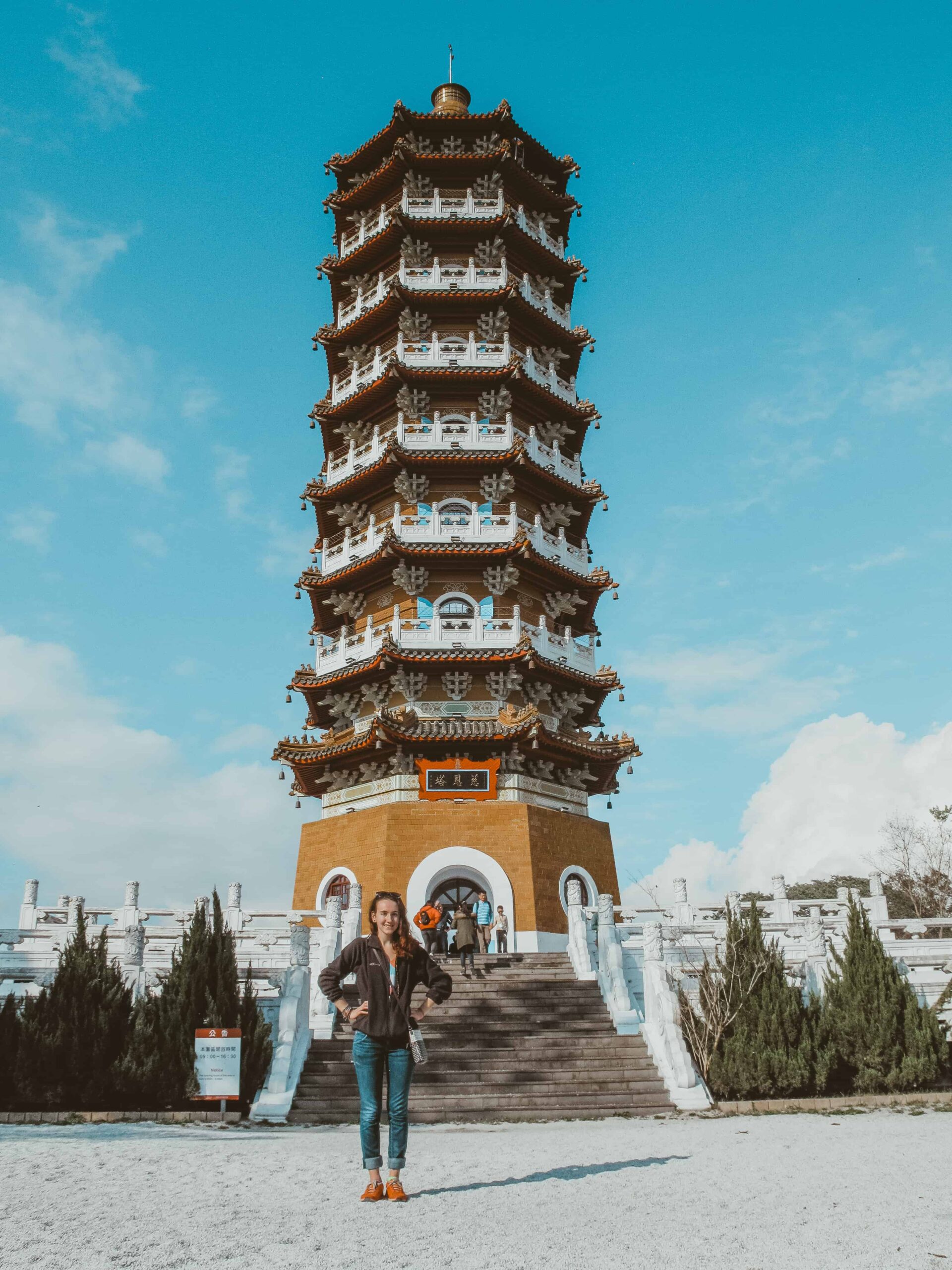
White Pagoda Of Ciyun Temple.
Planning Your Visit: A Practical Guide
Essential Information for Your Visit to Ciyun Temple
Visiting Ciyun Temple (慈云寺) offers a unique opportunity to delve into the rich tapestry of Chinese Buddhist history and culture, all while enjoying stunning natural landscapes. Here’s everything you need to know to make your visit both enjoyable and meaningful.
Location and Getting There
Ciyun Temple is located at the base of Shizishan Mountain in the Nan’an District of Chongqing, overlooking the Yangtze River. Its serene setting makes it a peaceful retreat within the bustling city.
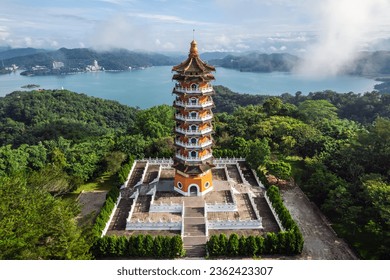
White Pagoda Of Ciyun Temple.
- Address: Shizishan, Nan’an District, Chongqing, China
- Transportation:
- By Bus: Take bus lines 338, 373, 375, Tourist Line T026, T040, or T072. Disembark at Zishui Xiaodeng Stop (字水宵灯站) and walk approximately 250 meters north to reach the temple.
- By Taxi: Taxis are readily available throughout Chongqing and can take you directly to the temple.
Opening Hours and Admission
- Opening Hours: Daily from 8:00 AM to 5:30 PM
- Admission Fee: Free
Key Highlights of Ciyun Temple
As you explore Ciyun Temple, be sure to take note of the following highlights:
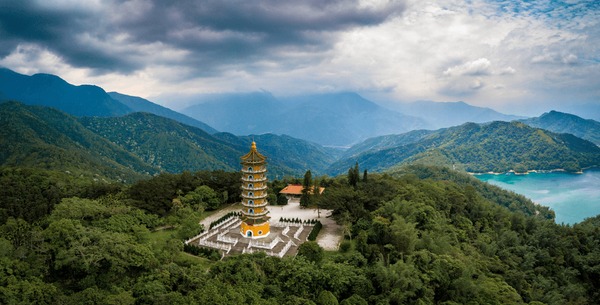
White Pagoda Of Ciyun Temple.
-
Architectural Wonders: The temple showcases a delightful blend of Chinese and Western architectural styles, with structures including the Universal Virtue Hall, Guanyin Hall, and the ancient Buddha cave, many of which date back to the Tang Dynasty.
-
Buddhist Treasures: The temple houses an impressive collection of artifacts such as jade Buddha statues, intricate Vajra canopies, and a wealth of scriptures. The Shakyamuni Jade Buddha, standing at 1.87 meters, is one of the largest of its kind in China.
-
The Bodhi Tree: A sacred Bodhi tree transplanted from India symbolizes resilience and hope, having revived after a period of dormancy during the Cultural Revolution.
-
Panoramic Views: Ascend to the temple’s highest point for breathtaking views of the Yangtze River and the surrounding landscape. The Haoyue Pavilion offers a perfect vantage point to soak in the beauty of the area.
Things to Do
-
Sample the Vegetarian Cuisine: Ciyun Temple is famous for its delicious vegetarian meals, available in various styles. Be sure to try the “pay as you wish” meals at 11:00 AM and 5:00 PM, but arrive early as they tend to sell out quickly.
-
Ring the Ancient Bell: For a small fee of ten yuan, you can strike the ancient bell adjacent to the incense platform. Each toll connects you to the temple’s historical essence.
-
Capture the Moment: Bring your camera to capture the stunning architecture and scenic views. Early mornings and late afternoons offer the best lighting for photography.
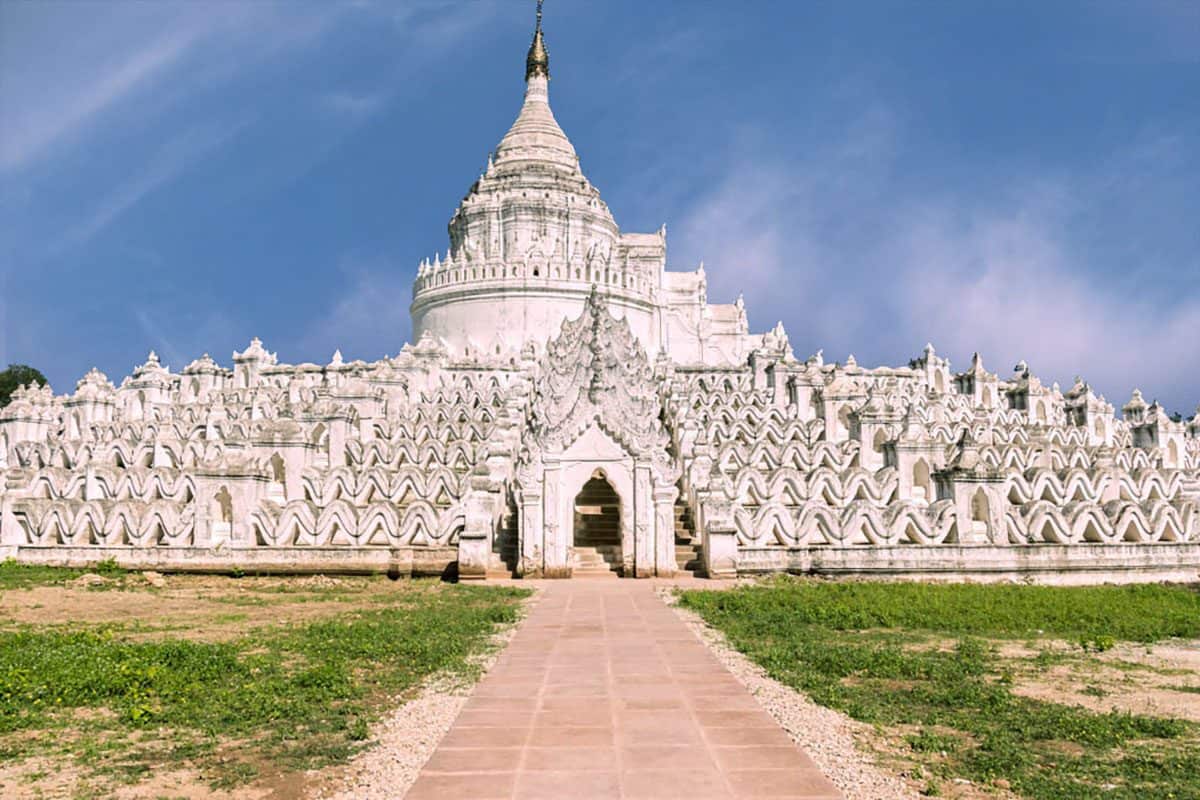
White Pagoda Of Ciyun Temple.
Useful Tips for Visitors
-
Dress Comfortably: Wear comfortable shoes suitable for walking uphill and dress in layers to accommodate Chongqing’s variable weather.
-
Respect Local Customs: As a place of worship, maintain a respectful demeanor. Modest attire is encouraged, especially in sacred areas.
-
Stay Hydrated: If you’re not accustomed to the altitude, drink plenty of water and take your time exploring.
Nearby Attractions
While visiting Ciyun Temple, consider exploring other nearby attractions:
- Nanbin Park: A lovely park offering additional panoramic views of the Yangtze River and the city.
- Chongqing Changjiang Museum of Contemporary Art: Dive into the vibrant contemporary art scene of the region.
- Historical Sites in Nan’an District: Discover the rich history of the area with its various cultural sites and landmarks.
Conclusion
Ciyun Temple is more than just a destination; it’s a journey through history, culture, and spirituality. Whether you’re here for the architecture, the serene environment, or to experience a piece of Buddhist heritage, your visit promises to be enriching. Plan your visit thoughtfully, and immerse yourself in the beauty and tranquility that this remarkable temple has to offer.
Tickets: Prices, Booking, and Tips
Ticket Information for Ciyun Temple
Visiting the Ciyun Temple (慈云寺) offers an enriching experience steeped in history, culture, and spirituality. Here’s everything you need to know about accessing this remarkable site.
Admission Fee
- Ticket Price: Free
One of the highlights of Ciyun Temple is that it does not charge an admission fee, making it an accessible destination for all travelers.
Opening Hours
- Daily Hours: 8:00 AM – 5:30 PM
The temple welcomes visitors during these hours, providing ample opportunity to explore its serene grounds and historical structures.
Location
Ciyun Temple is located at the foot of Shizishan Mountain in the Xuantan Temple area of the Nan’an District in Chongqing. Its proximity to the Yangtze River enhances its scenic beauty, making it a perfect retreat from the urban bustle.
Getting There
To reach Ciyun Temple, you can take one of several public transport options:
– Buses: Lines 338, 373, 375, Tourist Line T026, T040, or T072 will take you to the nearby Zishui Xiaodeng Stop (字水宵灯站). From there, it’s a short 250-meter walk north to the temple entrance.
Tips for Your Visit
- Plan Your Visit: Although the temple is free to enter, it can be beneficial to arrive early to enjoy a quieter atmosphere and avoid crowds, especially during weekends and holidays.
- Vegetarian Meals: Don’t miss the opportunity to sample the renowned vegetarian meals offered at the temple, which range from 10 to 20 yuan. These meals are available on a “pay as you wish” basis at 11:00 AM and 5:00 PM, but be sure to arrive early as they sell out quickly.
- Experience the Ancient Bell: At the temple, you can strike an ancient bell for 10 yuan. This unique experience allows you to feel connected to the temple’s history and the passage of time.
- Wear Comfortable Shoes: The temple grounds feature various pathways and steps. Comfortable footwear will make your exploration more enjoyable.
Conclusion
A visit to Ciyun Temple is not just a journey into a place of worship but also an opportunity to immerse yourself in the rich tapestry of Chinese culture and history. With free admission, stunning views, and unique experiences, it’s a must-visit destination for anyone traveling in Chongqing.
How to Get There: A Complete Transportation Guide
Navigating Your Way to Ciyun Temple: A Transportation Guide
Visiting the Ciyun Temple (慈云寺) in Chongqing is a remarkable journey that blends the serene beauty of nature with the rich tapestry of Chinese history. Nestled at the foot of Shizishan Mountain and overlooking the majestic Yangtze River, this temple offers a peaceful retreat for both spiritual seekers and history enthusiasts. Here’s how you can easily reach this enchanting destination.
Location
Ciyun Temple is located in the Nan’an District of Chongqing, specifically along Nanbin Road. The temple’s proximity to the Yangtze River enhances its picturesque setting, making it a must-visit for those exploring the city.
Getting There
By Public Transportation
- Bus Services:
- Several bus lines conveniently serve the area around Ciyun Temple. You can take Bus 338, 373, 375, or any of the Tourist Lines: T026, T040, or T072.
- Disembark at the Zishui Xiaodeng Stop (字水宵灯站).
-
From the bus stop, it’s a short walk of approximately 250 meters to the temple entrance, heading north.
-
Subway:
- While there is no direct subway line to Ciyun Temple, you can take the subway to the nearest stations in the Nan’an District. Once you arrive, use local buses or taxis to reach the temple.
By Taxi or Ride-Hailing Services
- For a more direct and comfortable option, you can hail a taxi from anywhere in Chongqing. Simply provide the driver with the address of Ciyun Temple.
- Alternatively, popular ride-hailing apps like Didi are widely used in Chongqing and can be a convenient way to navigate the city.
By Car
- If you prefer to drive, follow the local road signs directing you to Nanbin Road and Shizishan Mountain. There is parking available near the temple, allowing you to explore at your leisure.
Travel Tips
- Optimal Visiting Hours: Ciyun Temple is open from 8:00 AM to 5:30 PM. To avoid crowds, consider visiting early in the morning or later in the afternoon.
- Free Admission: Entry to the temple is free of charge, making it an accessible destination for all travelers.
- Comfortable Footwear: The temple’s expansive grounds and surrounding areas may require some walking, so wear comfortable shoes to enhance your experience.
Nearby Attractions
While you’re in the Nan’an District, take the opportunity to explore other attractions nearby, such as:
– Nanbin Park: A lovely park along the river with stunning views.
– Chongqing Changjiang Museum of Contemporary Art: A hub for art lovers.
– Chao Tian Men Port: A bustling area where you can see boats navigating the Yangtze River.
Conclusion
Reaching Ciyun Temple is straightforward and rewarding, whether you choose public transport, a taxi, or a self-drive option. With its historical significance and scenic views, the journey to this spiritual haven is just as enchanting as the destination itself. Prepare to immerse yourself in the rich cultural heritage of Chongqing!
Local Cuisine and Accommodation Nearby
When visiting the enchanting Ciyun Temple, immersing yourself in the local cuisine and finding comfortable accommodations nearby will enhance your cultural experience in Chongqing. This vibrant city, known for its rich history and stunning landscapes, offers a delightful array of vegetarian meals and cozy places to stay.
Savor the Local Flavors
Ciyun Temple is celebrated for its vegetarian dining options, which are not only delicious but also reflect the Buddhist tradition of compassion towards all living beings. Here are some recommended dining experiences:
-
Temple’s Vegetarian Meals: Take advantage of the temple’s own dining facilities, where you can enjoy a variety of vegetarian dishes. The “pay as you wish” meals offered at 11:00 AM and 5:00 PM are particularly popular, providing a unique chance to savor authentic flavors without breaking the bank. Arriving early is advisable, as these meals often run out quickly.
-
Vegetarian Restaurants Nearby:
- Loving Hut: A global chain known for its tasty vegan dishes, Loving Hut is a short drive from the temple. Try their signature dishes like the vegan dumplings or stir-fried noodles.
- Chongqing Vegetarian Restaurant: Located in the heart of the city, this restaurant features a wide range of local vegetarian specialties. Their spicy tofu and vegetable hotpot are local favorites that will tantalize your taste buds.
Comfortable Stays
After a day of exploration at Ciyun Temple, retreat to one of the nearby accommodations that combine comfort with local charm. Here are some options:
-
Ciyun Temple Guesthouse: For a truly immersive experience, consider staying at the temple’s guesthouse. Surrounded by serene nature, this option offers basic yet comfortable rooms, perfect for those looking to stay close to the spiritual heart of the area.
-
Nanbin Hotel: Situated along the Yangtze River, this hotel offers stunning views and modern amenities. With a restaurant serving local cuisine and easy access to the temple, it’s an excellent choice for travelers seeking convenience and comfort.
-
Chongqing Grand Hotel: A bit further from the temple but well worth it, this hotel features spacious rooms and a range of dining options. Its central location makes it easy to explore other attractions in Chongqing.
Concluding Thoughts
Whether you indulge in the temple’s vegetarian delights or explore local restaurants, your culinary journey in Chongqing will be a memorable one. Coupled with comfortable accommodations, your visit to Ciyun Temple will surely be enriched by the flavors and hospitality of this extraordinary city. Enjoy your adventure in this historical and cultural gem of China!
Frequently Asked Questions
Frequently Asked Questions about the White Pagoda of Ciyun Temple
1. What is the history of Ciyun Temple and its White Pagoda?
Ciyun Temple, originally built during the Tang Dynasty, underwent significant renovations during the Qianlong period of the Qing Dynasty. The temple was dedicated to Guanyin and later expanded in 1927, becoming a unique site where monks and nuns coexisted. The White Pagoda, a notable feature of the temple, reflects the harmonious blend of Chinese and Western architectural styles that characterize the temple complex.
2. How do I get to Ciyun Temple?
Ciyun Temple is located in the Nan’an District of Chongqing, near the banks of the Yangtze River. You can take public transportation, such as bus lines 338, 373, 375, or various tourist lines, and disembark at the Zishui Xiaodeng Stop. From there, it’s a short 250-meter walk to the temple.
3. What are the opening hours and admission fees?
Ciyun Temple is open daily from 8:00 AM to 5:30 PM. Admission to the temple is free, allowing visitors to explore its rich history and beautiful architecture without any cost.
4. What can I expect to see inside the temple?
Inside Ciyun Temple, you’ll encounter a variety of architectural marvels, including the main hall, multiple pavilions, and the famed White Pagoda. The temple also houses significant Buddhist artifacts, such as a jade Buddha statue, Vajra canopies, and numerous scriptures. The “Five Wonders” of Ciyun Temple are particularly noteworthy for their cultural significance.
5. Are there any special experiences or activities at Ciyun Temple?
Visitors can enjoy several unique experiences at Ciyun Temple. You can sample delicious vegetarian meals offered at the temple, which range from à la carte options to “pay as you wish” meals. Additionally, you may strike an ancient bell located near the incense platform for a small fee, symbolizing good fortune. Don’t forget to ascend to the highest point for breathtaking panoramic views of Chongqing!
6. Is there a dress code or etiquette I should be aware of?
While there is no strict dress code, visitors are encouraged to dress modestly to respect the temple’s religious significance. It’s advisable to wear comfortable clothing and shoes, especially if you plan to explore the temple’s various levels and outdoor areas.
7. What nearby attractions should I consider visiting?
Ciyun Temple is surrounded by several attractions worth exploring. Consider visiting Nanbin Park, the Chongqing Changjiang Museum of Contemporary Art, or other historical sites in the Nan’an District. These locations complement your temple visit and provide insight into the rich culture of Chongqing.
8. When is the best time to visit Ciyun Temple?
The best time to visit Ciyun Temple is during the early morning or late afternoon. These times offer softer lighting for photography and a more tranquil atmosphere, allowing you to fully appreciate the beauty and serenity of the temple grounds.
Final Thoughts on Your Trip
As your journey draws to a close, the White Pagoda of Ciyun Temple stands as a remarkable testament to the rich tapestry of Chinese history, spirituality, and architectural grandeur. Nestled in the serene landscape of Chongqing, this temple not only offers breathtaking views of the Yangtze River but also invites you to delve into the profound essence of Buddhism.
During your visit, you experienced the harmonious blend of traditional and contemporary elements that define Ciyun Temple. It is a site where the past and present coexist, encapsulating centuries of devotion and artistic expression. Here are a few final reflections to enhance your experience:
-
Embrace the Spiritual Atmosphere: The tranquil ambiance of the temple, coupled with the historical artifacts, creates an environment that encourages reflection and peace. Take a moment to sit quietly, breathe in the scent of incense, and absorb the spiritual energy that permeates the air.
-
Cherish the Cultural Treasures: From the exquisite jade Buddha to the miraculous Bodhi tree, each artifact tells a story of resilience and faith. Allow these treasures to inspire you as you continue your travels through China, seeking connections to its rich heritage.
-
Capture the Moments: As you leave, don’t forget to take with you the stunning vistas and architectural marvels that define Ciyun Temple. Whether through photographs or memories, these moments will forever remain a part of your journey.
-
Savor the Local Flavors: Before you depart, indulge in the temple’s renowned vegetarian meals, a delightful way to taste the local culture and nourish your body after a day of exploration.
Your visit to the White Pagoda of Ciyun Temple is more than just a stop on a travel itinerary; it is an invitation to engage with a living history, to appreciate the artistry of centuries past, and to connect with the spiritual heart of China. As you carry these experiences with you, may they serve as a reminder of the beauty and depth that await in every corner of this incredible country. Safe travels!